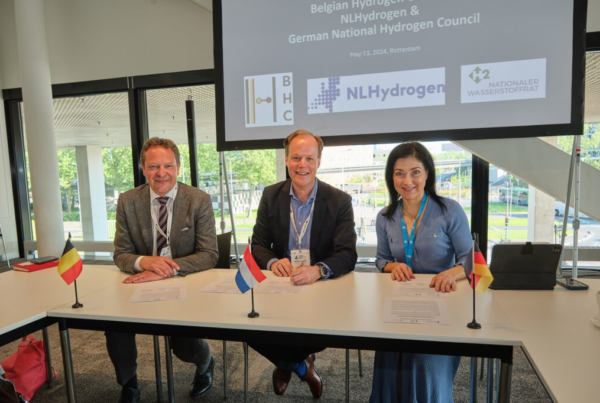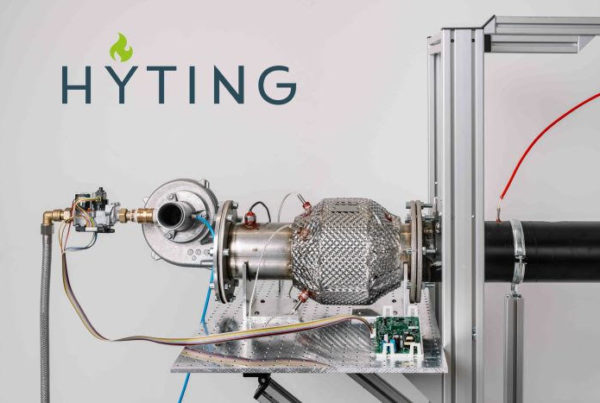
With the framework for financing a Jutland hydrogen backbone in place, the state is preparing to make state financing available if the market meets five conditions. The agreement is an important step to reap the value of the Danish offshore wind resource and promote Danish production of hydrogen and green fuels, which benefits local growth and European security of supply.
With the North Sea at its back, Denmark has a unique potential to produce enough power for 30 million households, which can also be used to produce green hydrogen, which can both help heavy industry’s green transition and become green fuels for e.g. air and shipping.
It helps with decisive CO 2 reductions in Denmark and the rest of Europe. Danish hydrogen production can thus become a new green export adventure, which both contributes to Danish growth, green jobs and European security of supply.
Now the government and the Socialist People’s Party, Liberal Alliance, the Conservative People’s Party, Enhedslisten, Radikale Venstre, Dansk Folkeparti and the Alternative are writing the next chapter in the story with a new agreement that creates the framework for financing and regulating a possible Jutland’s hydrogen backbone, which can be used to export the green hydrogen to Germany.
The state is ready to assume part of the risk and open the treasury, but Danes’ money must be used responsibly. Therefore, it is a requirement from the state that the market players lean into the project and fulfill five conditions. This means, among other things, that the market participants must undertake to buy 1.4 GW, which corresponds to approx. 44 percent of the pipe’s capacity, so the state only invests in building a pipe that is used and brings money back to the treasury.
” Green hydrogen is a key that can unlock enormous climate benefits, green Danish workplaces and new export opportunities – and with this agreement we are taking another important step so that we can realize the full potential. At the same time, it is important that we do not gamble with Danes’ money. We must do it responsibly. We are therefore ready to let the government take on part of the risk if the industry also leans into the project. After all, we only have to build the pipe if the industry wants to use it,” says Climate, Energy and Supply Minister Lars Aagaard.
The possibility to produce and sell hydrogen is also central to the Danish ambitions for the development of offshore wind, especially in connection with the upcoming offshore wind supply, which gives the possibility of so-called overplanting. Here, the booking requirement of 1.4 GW corresponds to e.g. to establish a total of approx. 2 GW replanting for hydrogen production in the North Sea.
The contracting parties say
” The North Sea contains enormous offshore wind potential. We must reap that. So we can ensure green and cheap electricity in Danish and European households and so we can boost the production of green fuels for heavy industry, ships and aircraft. A future Jutland hydrogen backbone is the key to unlocking the potential for Danish hydrogen production. Therefore, today we are taking a decisive step towards opening up a new green business adventure that creates Danish jobs and strengthens European security of supply,” says Lea Wermelin, climate, energy and supply rapporteur for the Social Democrats.
” We are now one step closer to securing the framework for the green adventure that hydrogen can become for Denmark, and ensuring the necessary transparency for the companies that also see the potential in green hydrogen. Both in Denmark and Europe, we will have a huge demand for new green fuels. It is very good that we in Denmark can help ensure access to green hydrogen. It is important for the climate, for Danish exports and for new green jobs ,” says Linea Søgaard-Lidell, climate, energy and supply rapporteur for the Liberal Party.
” Today we are taking another step on the road towards a Danish hydrogen adventure. Hydrogen produced from green energy is one of the green fuels of the future. Today, we are getting key financial framework conditions in place – to reduce the uncertainty for both the industry and for the common fund of all of us when a new hydrogen infrastructure is to be developed. That is why we are looking forward to the dialogue that is now coming, where the big ambitions will result in concrete action and investments ,” says Henrik Frandsen, climate, energy and supply rapporteur for the Moderates.
” Now we can move forward in concretizing the hydrogen pipeline and the dialogue with the green business community. Although this is only a step on the road, the course is clearly set towards Denmark getting a hydrogen infrastructure ,” says Signe Munk, climate, energy and supply spokesperson for the Socialist People’s Party.
” It is good that the framework for a hydrogen pipe is now agreed. It is an important component of our green infrastructure. This is a balance between taking care of taxpayers’ risk and helping an industry stand up. That balance seems to be pretty much struck. But we will keep a close eye on whether inadequacies are created for the offshore wind tenders ,” says Steffen Frølund, climate and supply spokesperson for the Liberal Alliance.
” The hydrogen infrastructure is crucial for the green transition. For example, hydrogen plays a necessary role when, in particular, heavy transport needs to be converted. At the same time, the hydrogen pipe will support power-to-x projects on its way down through Jutland and create Danish jobs in an area where the municipalities have already invested heavily and taken responsibility for the green transition. With today’s agreement, we are taking a step closer to realizing the hydrogen pipe, but we are not yet there. The development must take place in close cooperation with the industry and the Conservative People’s Party will follow the process closely,” says Dina Raabjerg, energy and supply spokesperson for the Conservative People’s Party.
” For Enhedslisten, it is important that the infrastructure and pipe systems for the transport of hydrogen become state-owned with a limited financial risk, and this is ensured by the agreement. We look forward to our energy supply being expanded with green hydrogen produced by electricity from wind turbines and solar cells. It provides new opportunities to phase out more fossil energy both in Denmark and in Germany,” says Søren Egge Rasmussen, climate, energy and supply rapporteur for Enhedslisten.
If we are to future-proof Europe’s competitiveness and create the foundation for the continent’s green transition, it requires even closer cooperation in the energy field. It has long been a radical vision that Danish wind turbines in the North Sea should contribute to a greener and safer Europe without dependence on fossil fuels. In this vision, a coherent hydrogen infrastructure across Europe plays a key role. We are happy that with yet another agreement we can get one step closer to the establishment of hydrogen infrastructure in Denmark, but are at the same time sincerely concerned that the lack of connection to the offshore wind supply and the strict booking requirement of 1.4 GW risks putting a brake on the expansion of offshore wind in Denmark,” says Samira Nawa, energy and supply spokesperson for Radikale Venstre.
” Unfortunately, Denmark is far behind in relation to hydrogen, compared to our neighboring countries. It is bad for Denmark, and we are now taking a step to rectify that. It has been uphill, but from an overall point of view we are quite satisfied that the private actors are getting firm ground under their feet to be able to invest. It is important for Denmark – both economically, but not least security-politically, as it contributes to the future independence from other countries, which is crucial for the Danish People’s Party ,” says Morten Messerschmidt, climate, energy and supply rapporteur for the Danish People’s Party.
” On the road to a fossil-free society, we must rebuild the energy system to be able to transport new forms of green energy, so that we can use them most efficiently. We are therefore satisfied that another important step has been taken in creating the framework for the hydrogen infrastructure of the future,” says Torsten Geil, climate, energy and supply rapporteur for Alternativet.
Facts
- The hydrogen in the Danish hydrogen tube must be green. This means that the power for hydrogen production must come from renewable energy sources such as the offshore wind farms in the North Sea, energy parks on land or other renewable energy facilities.
- Danish PtX developers have already announced upcoming projects which together amount to 9 GW, of which 7 GW cf. Energinet’s maturation project is close to a Jutland hydrogen backbone.
5 criteria for government funding
The principles in the agreement set the framework for a possible investment decision, which, according to the Act on Energinet, will have to be made by Energinet, which must make a Section 4 application, which the Minister for Climate, Energy and Supply will have to decide on. The parties agree to set five overall conditions for Energinet’s access to state funding:
- The booking requirement of 1.4 GW requires users to buy in 44 per cent. of the pipe’s capacity. In comparison, there were Baltic Pipe requirement of 80 percent pre-booked capacity. The users must also commit themselves for a minimum of 10-15 years.
- Energinet must prior to a possible investment decision enter into a contract with German Gasunie for a hydrogen pipeline to Germany, which mutually obligates both parties in relation to the establishment.
- Energinet must establish a new subsidiary for the development and operation of hydrogen infrastructure, so that it is ensured that electricity and gas customers do not pay for the hydrogen infrastructure through their electricity and heating bills.
- A state funding contribution must be assessed to be financially responsible and not incur expenses on the state budget.
- In order to ensure a fair distribution of expenses between the first and later users of the hydrogen pipe, Energinet can, subject to the approval of the Danish Supply Authority, charge lower tariffs during the start-up period, which means that the infrastructure is operated with a deficit, which is recovered when more users are connected to the hydrogen system.
Read the most up to date Fuel Cell and Hydrogen Industry news at FuelCellsWorks




